Before APC's gig at Nashville's Bridgestone Arena, bassist Matt McJunkins (above right) and guitarists James Iha and Billy Howerdel spend some time with PG's Chris Kies cataloging the guitars, basses, amps, and digital gear they require to pull off material from all three of their studio albums and beyond.
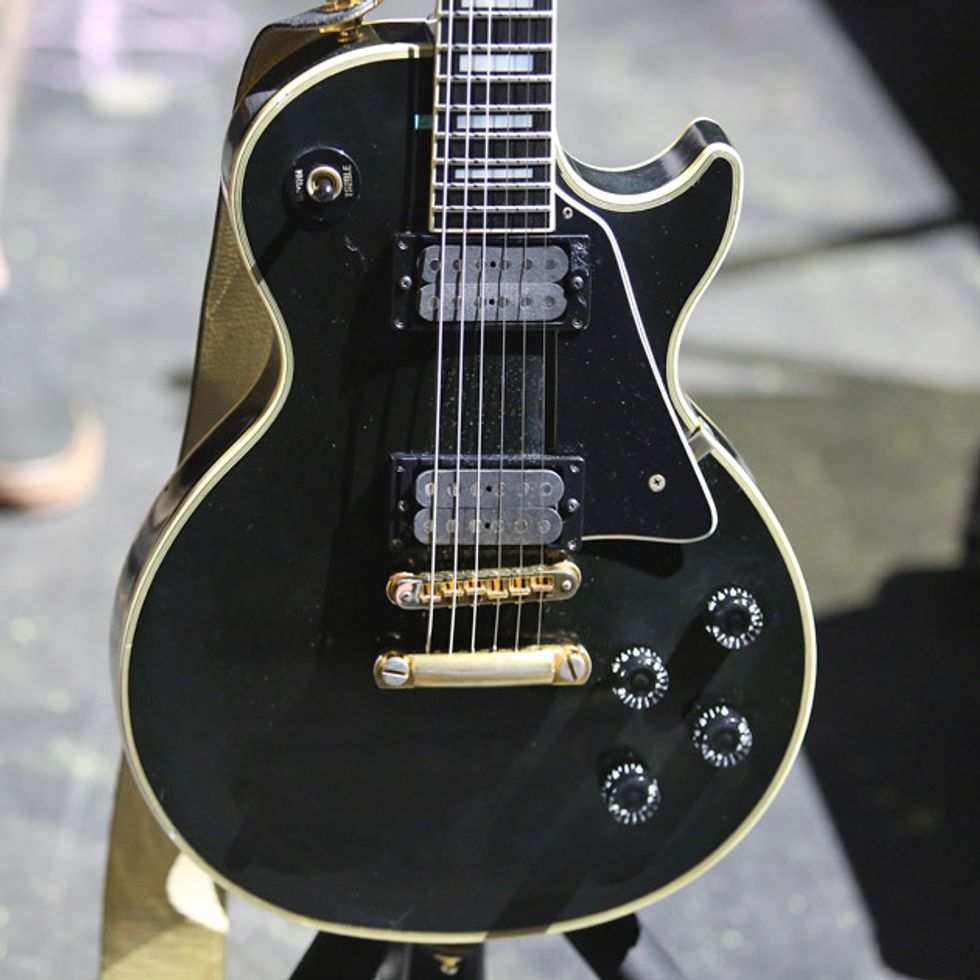
As part of the Smashing Pumpkins from the start, James Iha originally was a Fender guy in the Gish-era of the band, but slowly made his way to humbuckers and Gibsons. Here is a 1984 Gibson Les Paul Custom he’s had since the mid-’90s. The only thing he’s done to the guitar was swap in Tom Anderson H3 (bridge) and H1 (neck) humbuckers to match the sound Billy achieved on APC’s recordings. Following suit even further, Iha tunes this LP to C# and uses a custom set of Ernie Ball Slinkys (.056–.044–.032–.020P–.017–.012) that Billy came up with. He prefers to play with Jim Dunlop Tortex .73 mm picks.
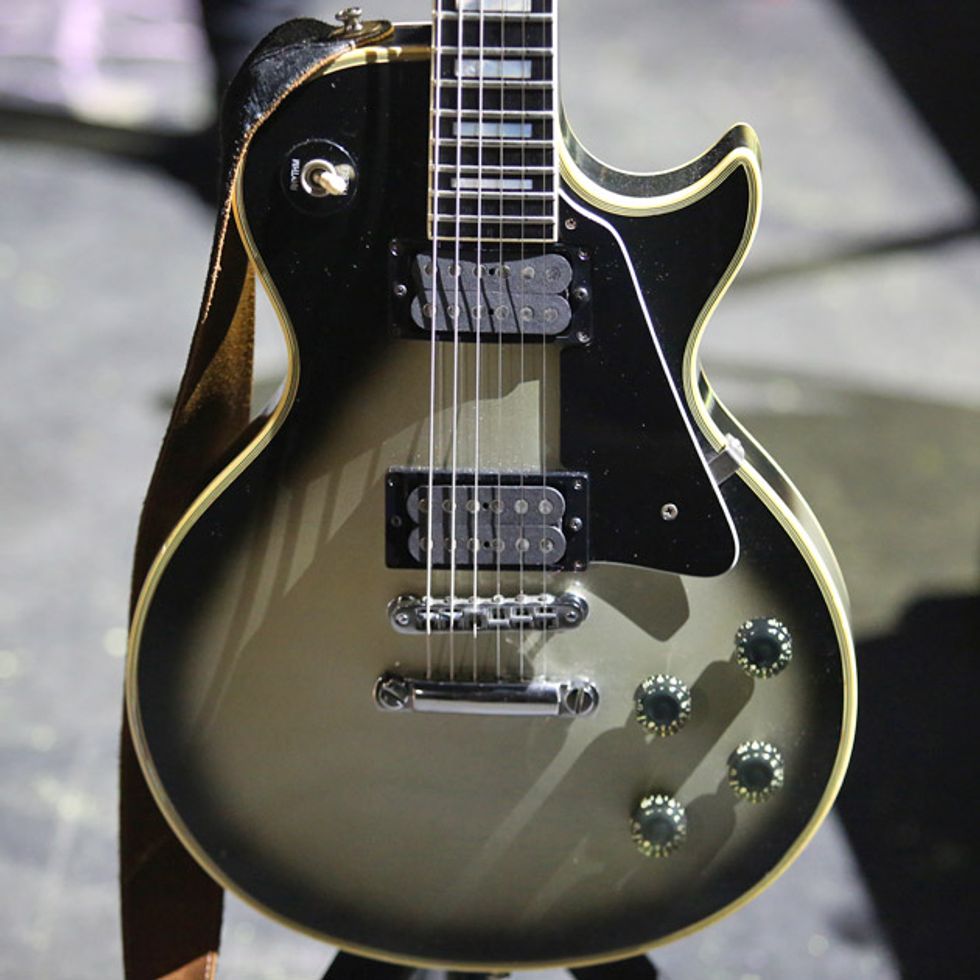
This ’80s silverburst Gibson Les Paul has a capo on the first fret and gets put to work for the song “Passive” off of Emotive.
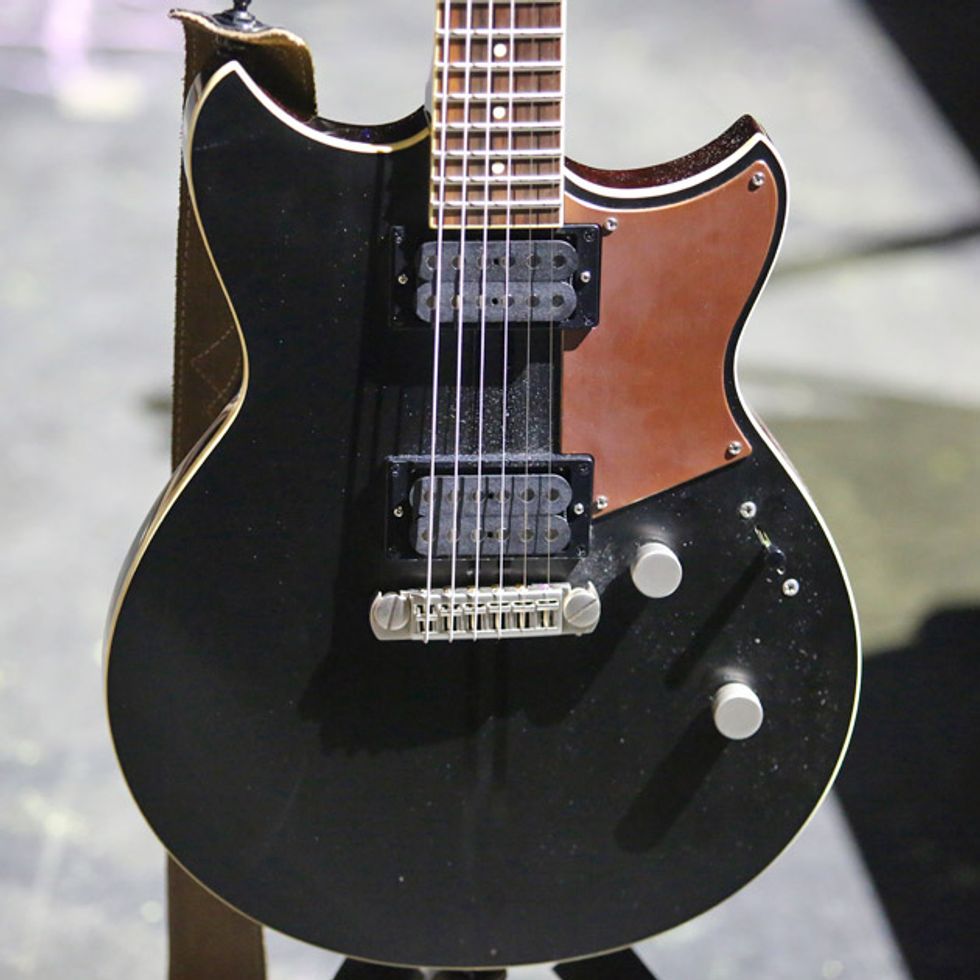
Here is a Yamaha Revstar that uses a capo on the second fret for the cover of Nick Lowe’s “(What's So Funny 'Bout) Peace, Love, and Understanding.”
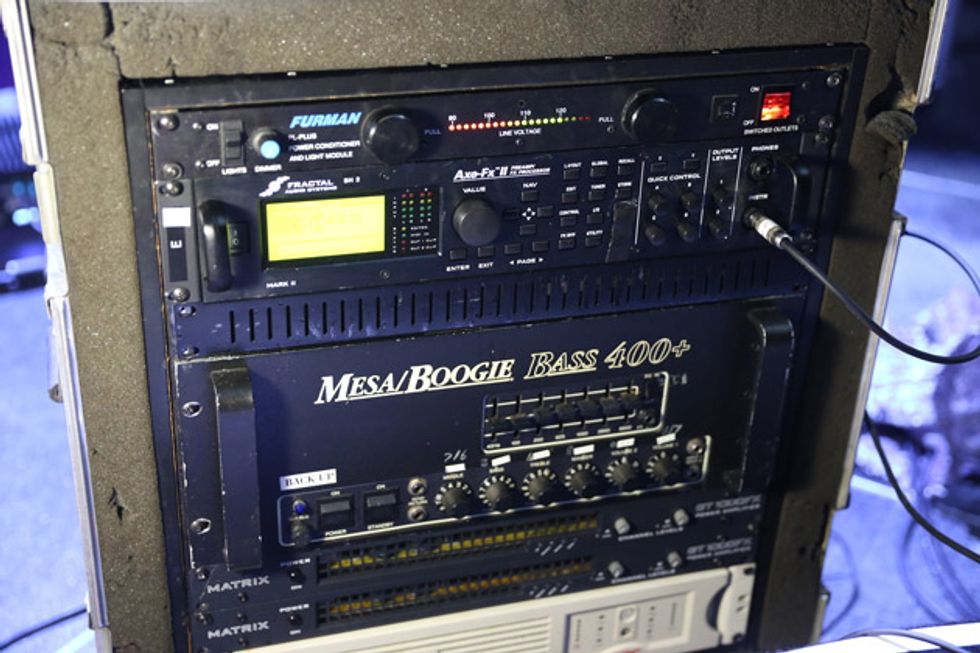
Eschewing any sort of tube amp, Iha relies on the Fractal Audio Axe-Fx II for all his amp simulations and various effects. He goes with in-ear monitors and has monitors or speaker cabs onstage. For his main rhythm setting, he selects a Friedman-style preset.
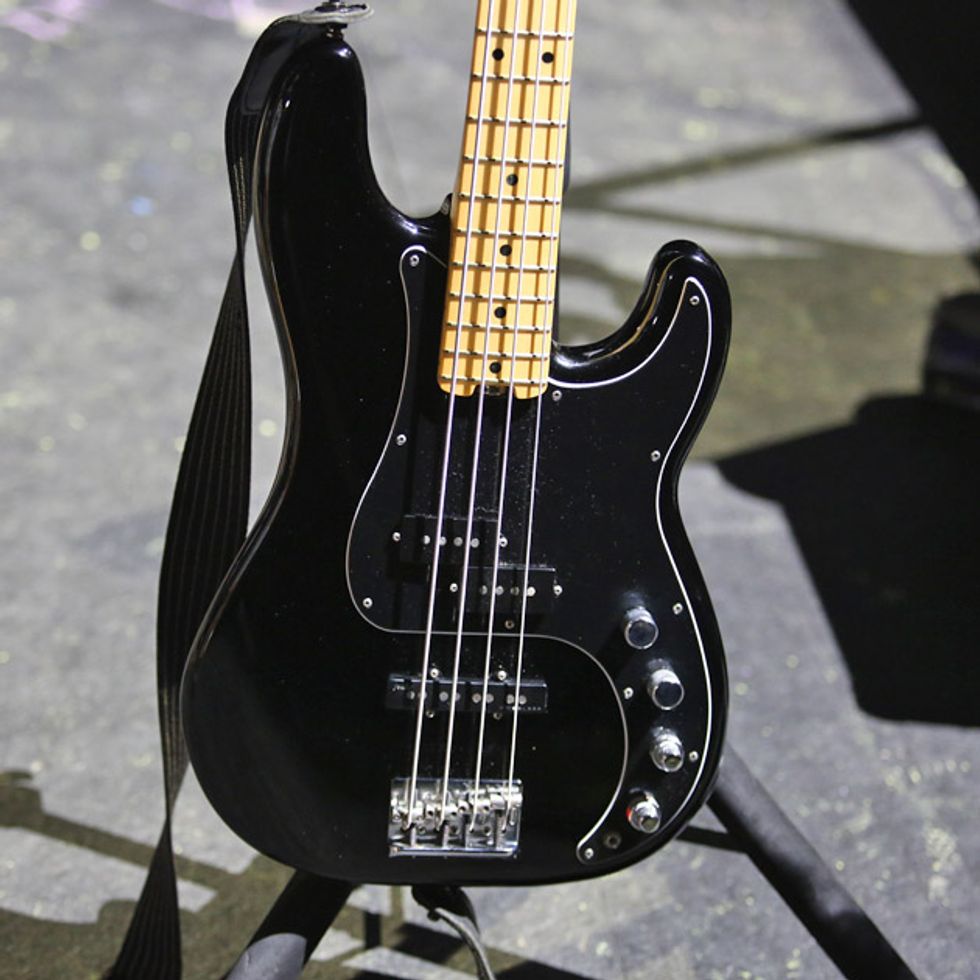
Back for his second Rig Rundown is bassist Matt McJunkins (check out our Eagles of Death Metal episode where Matt shows off some different gear.) who is still favoring Fender P basses. During his time in EODM, he rolled with a 2010 Fender American Deluxe Precision bass, but he recent upgraded to a new go-to—a 2017 Fender American Elite P. He rocks Ernie Ball Power Slinkys .055–.110 and Jim Dunlop Tortex .88 mm picks.
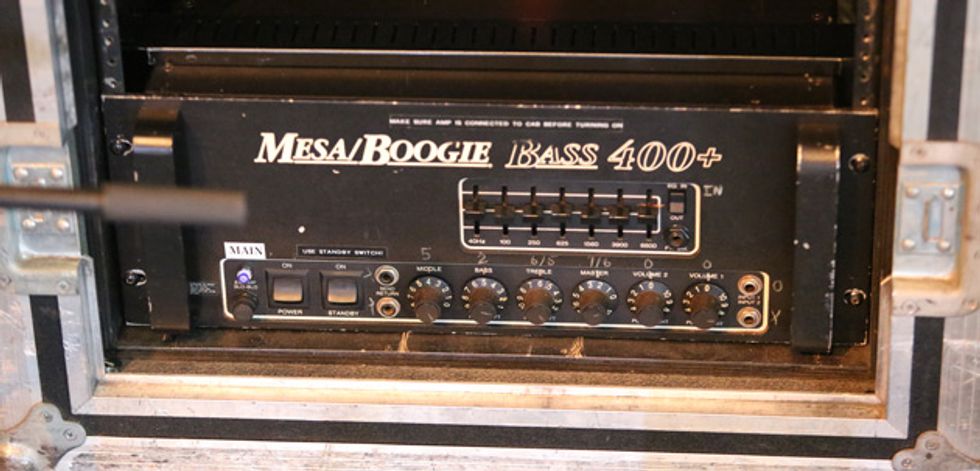
The core of McJunkins’ APC tone starts with the Mesa/Boogie 400+ that goes into the “Fridge”—an Ampeg 8x10 cab.
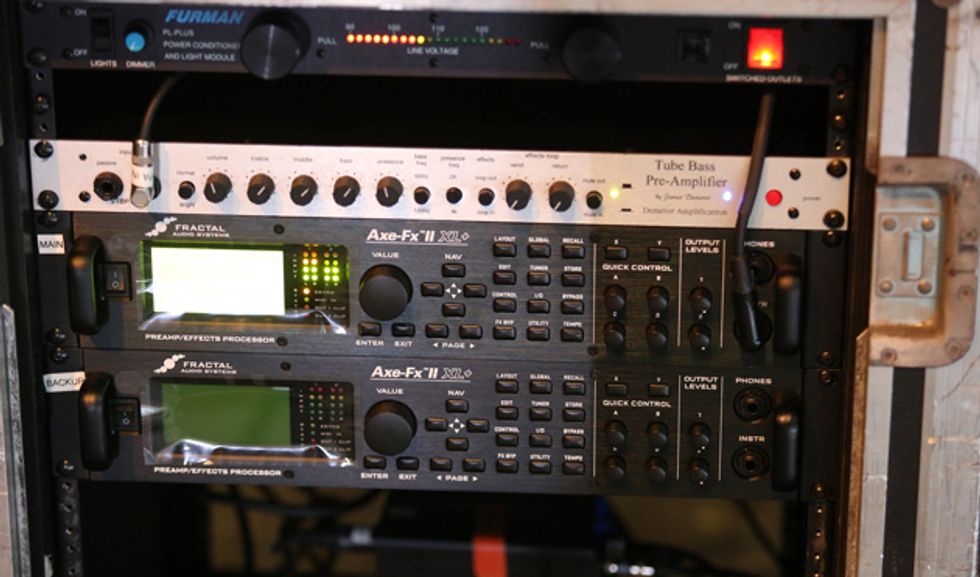
For additional tube-tone tweaking, McJunkins incorporates a Demeter Tube Bass Pre-Amplifier and all of his effects patches are coming from the Fractal Audio Axe-Fx II. Onstage, he controls everything with a Voodoo Lab Ground Control.
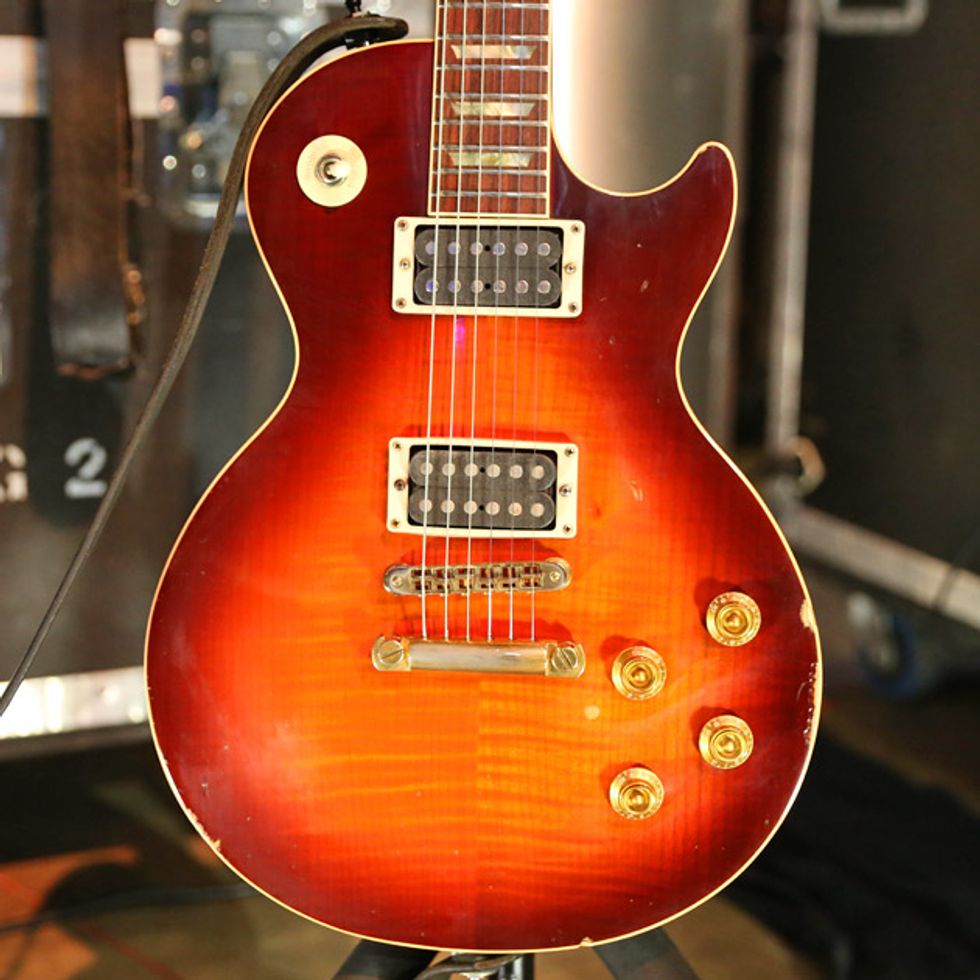
This is Billy Howerdel’s main squeeze—a 1960 Gibson Les Paul Classic Reissue that is actually two guitars he put together from his days as Trent Reznor’s tech for Nine Inch Nails. The guitar has been upgraded with Tom Anderson H3 (bridge) and H1 (neck) humbuckers, is tuned to C#, and has a custom set of Ernie Ball Slinkys (.056–.044–.032–.020P–.017–.012). All of his guitars, including this beast, has an added cap so when he rolls off the volume he doesn’t lose any of the guitar’s tone. In 2013, Billy spoke with PG about this special guitar, so we’ll let him take it away: “I was the guitar tech on a Nine Inch Nails tour and one of the guitars that lasted the longest—a cinnaburst 1960 reissue Les Paul—is my main guitar now. It got broken all of the time—all the guitars did. They had headstocks off, necks off, just shattered. I fixed this one so many times, and then one day it got thrown into the crowd and somebody in the audience ripped the headstock off. It was sitting headless for a while. I had trunks and trunks of guitars, probably 50 or 60 of them that I traveled with and tried to fix to get ready for a show today, tomorrow, two weeks from now. A similar cinnaburst guitar got broken, and I kept that headstock and tried to marry the two. It got put back on, but at sort of the wrong angle—because, of course, the wood type didn’t match. It’s a little less angled than normal, but it’s the best-sounding and best-playing guitar I’ve ever used. It was a happy accident. I talked with Gibson several years ago about doing a signature model with the same specs. Even if it’s not for mass production, I just want some duplicates in case something ever happens to it.”

Here you can see the break of the original headstock and how the repaired headstock has a minimal break angle.
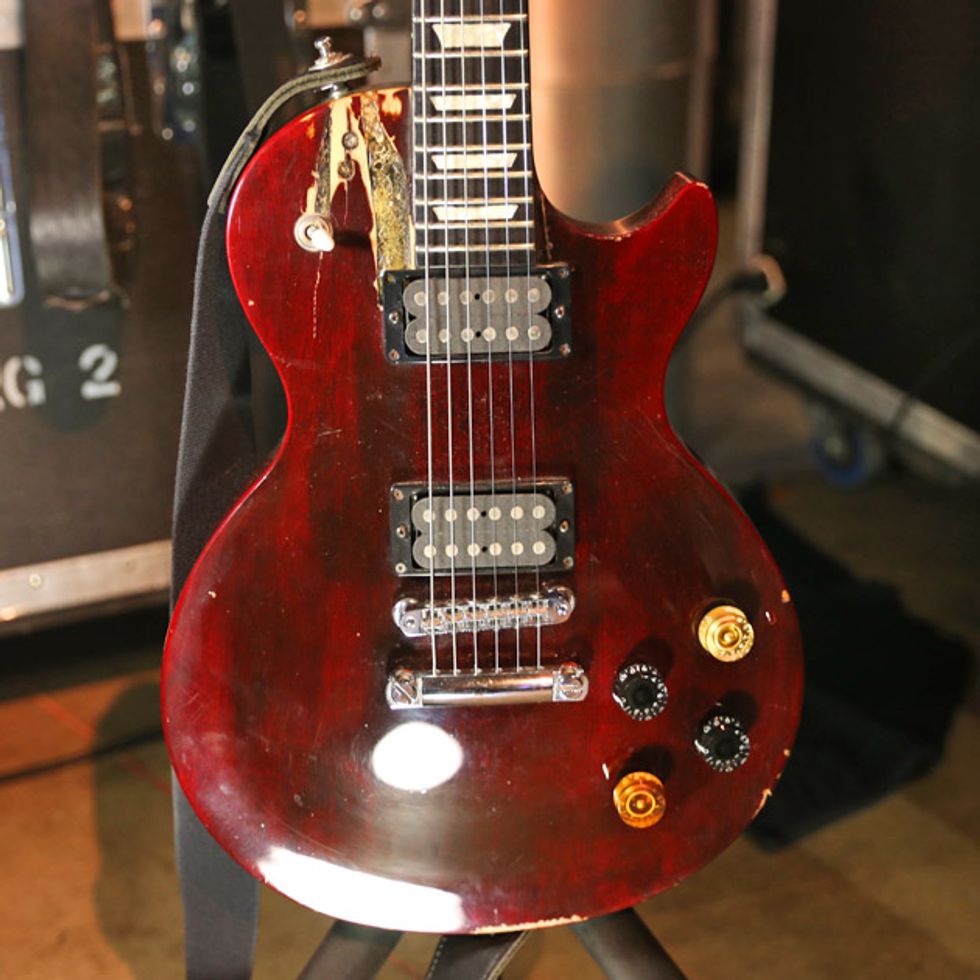
His second favorite guitar from the NIN days is this Les Paul Studio he prefers for slide work on “Blue” and half of “Outsider.” It also has been outfitted with Tom Anderson H3 (bridge) and H1 (neck) humbuckers and uses a custom tuning: B#-F#-B-B-B-B. He uses the Jim Dunlop 234 glass slide and always jams with Tortex 1.0 mm picks.
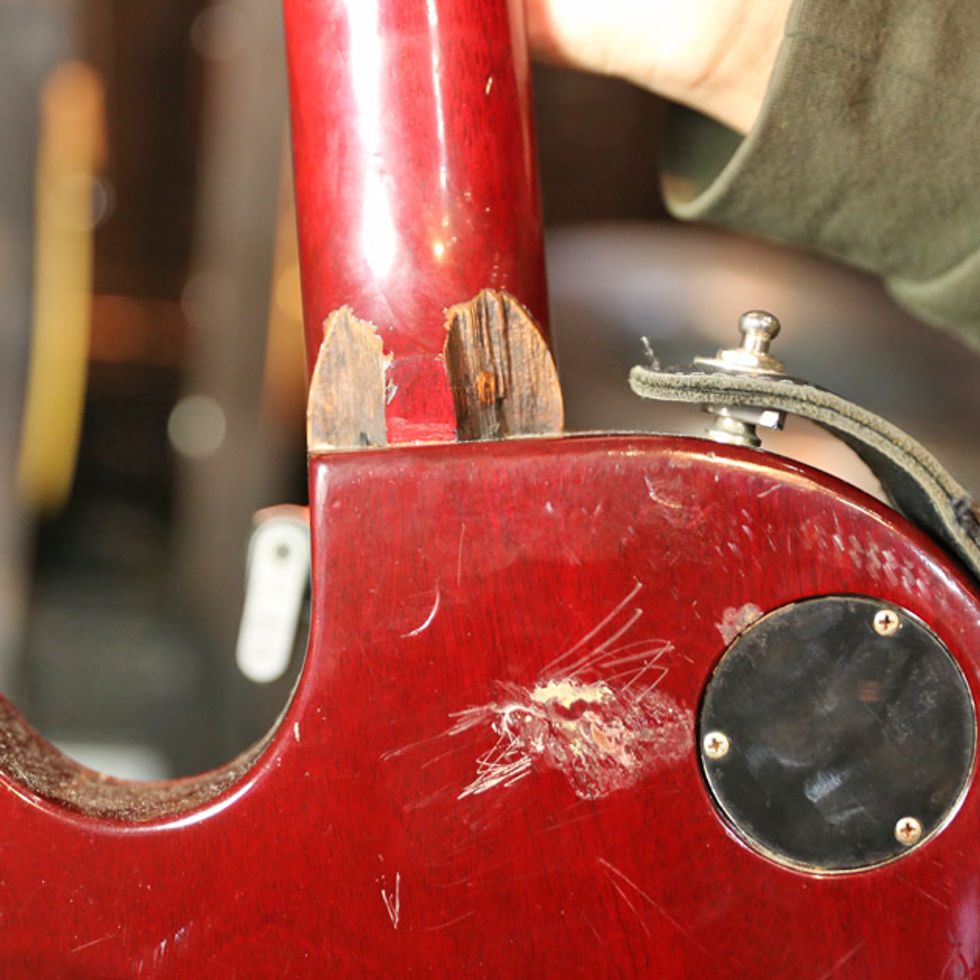
Look at the Studio’s gruesome neck joint!
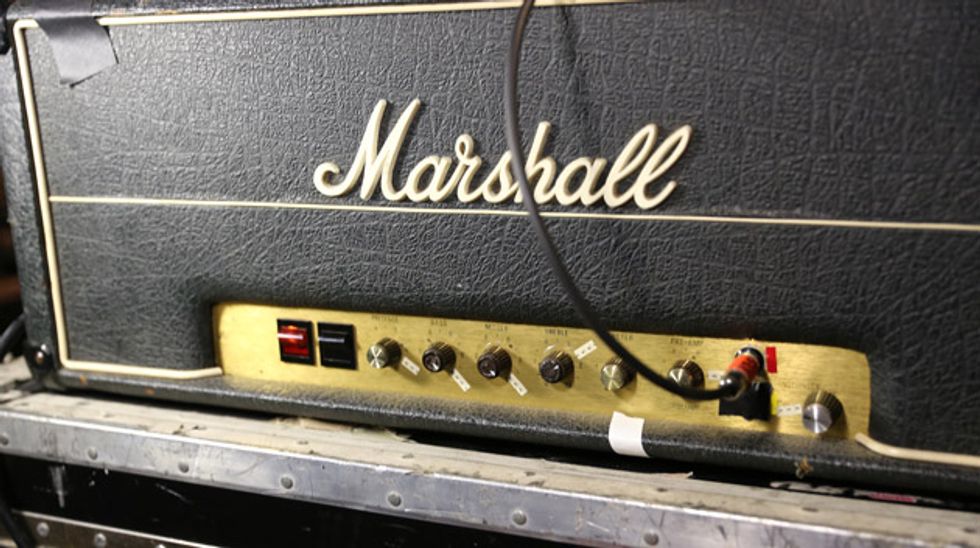
Billy’s fundamental sound starts with this Dave Friedman-modded 1978 100-watt Marshall Super Lead. Friedman reworked the preamp section to sound and react similarly to a 60-watt Naylor head that Billy loved. To help reduce unwanted noises and annoying buzzing, Billy started using Custom Audio Electronics isolation transformers.

The backside of Billy’s coveted ’78.
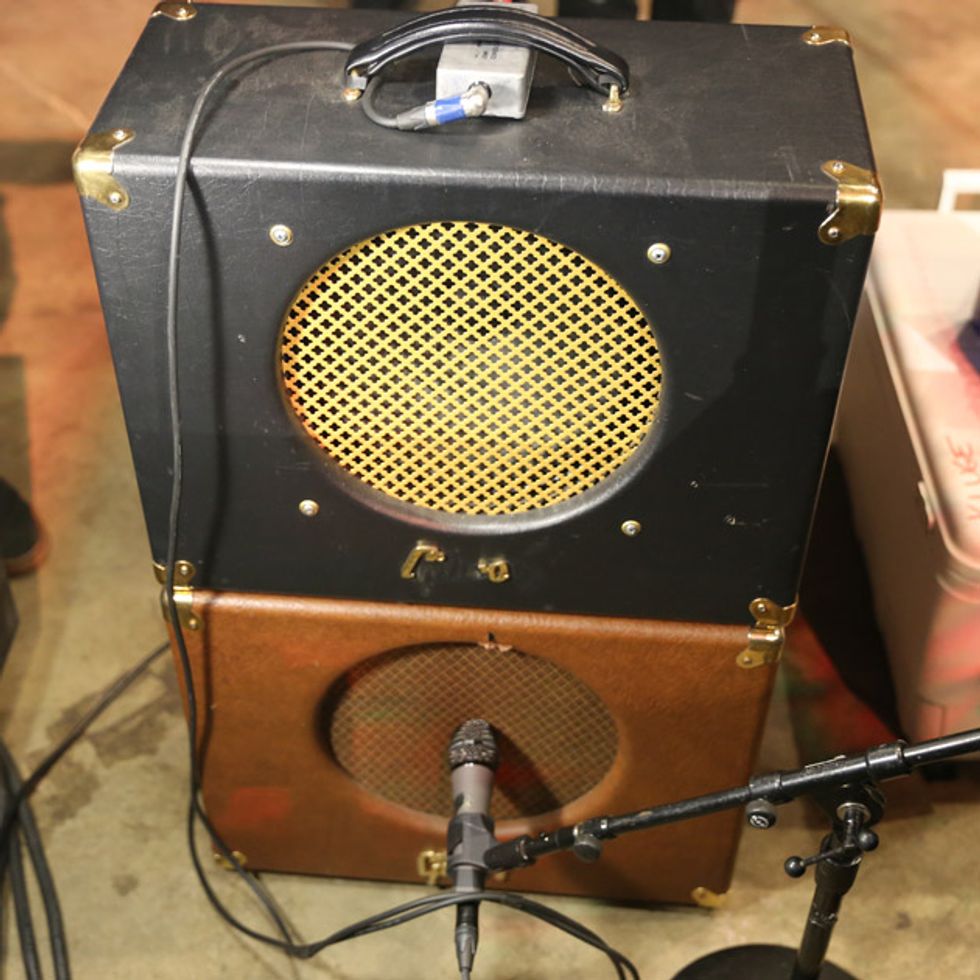
Depending on what the song needs, how the rooms sounds, and what is working on any given day, Billy will kick on either one of these Gibson GA-15RV 1x12 Goldtone combos that he also uses for his other band, Ashes Divide. Currently, the one on the bottom is the favored combo, which was actually uses parts and was built in the U.K. whereas the top combo was constructed with American components and assembled in the U.S.
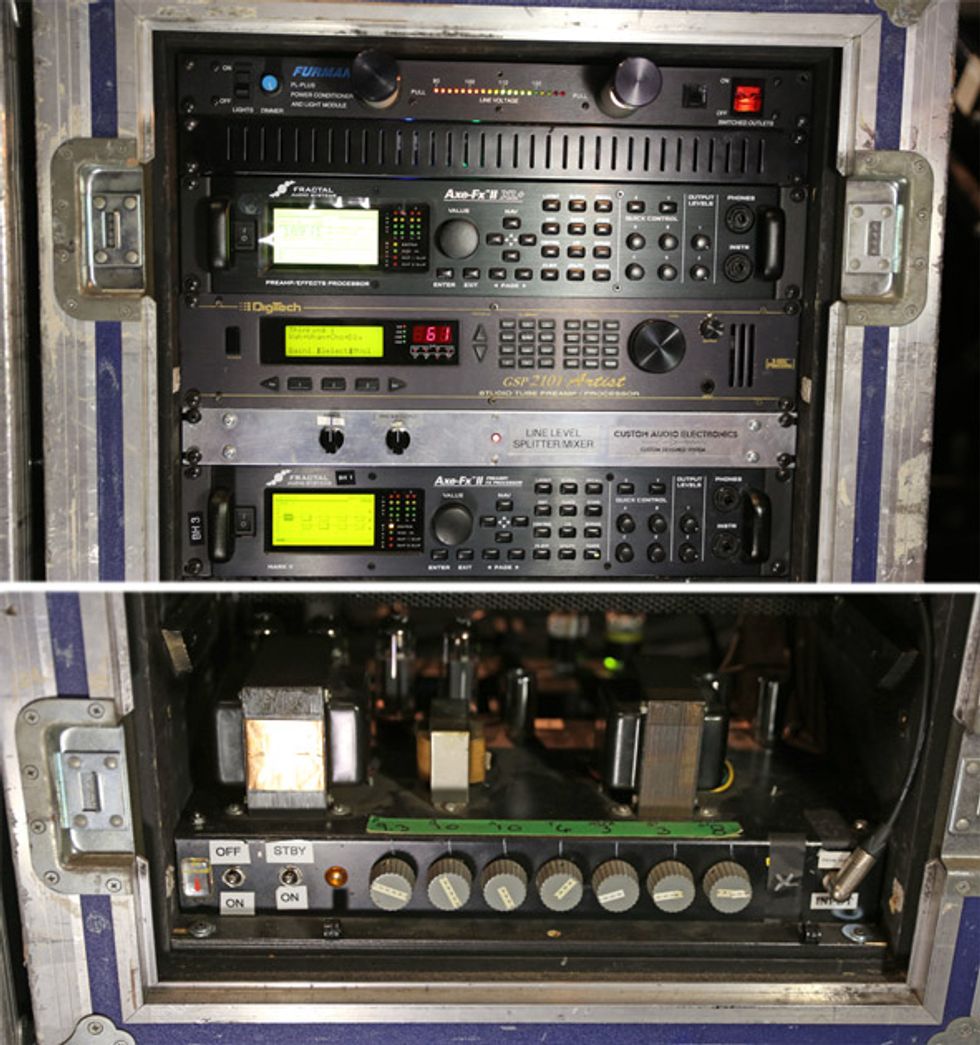
To accomplish all the soundscapes A Perfect Circle implements (and reduces headaches and anxiety), Howerdel leans on a Fractal Audio Axe-Fx II. Thankfully, tech Steven Alexander broke down the complicated signal path… keep up!
Guitar > Whirlwind Selector A/B box > Radial Engineering JDI (as a splitter to record a dry signal) > Axe-FX II rear input 1 (we found the rear to have a better signal for Billy’s rig than the front)
Axe-FX II output 1 > CAE splitter input 1
Axe-FX II output 2 > RJM Music Mini Effects Gizmo input (non-buffered)
Axe-FX II input 2 < CAE splitter send 1
CAE output 2 > Palmer “The Junction” guitar DI box (for FOH and recording)
CAE Send 2 > DigiTech GSP2101 input
DigiTech GSP2101 output > CAE splitter input 2
Billy Howerdel custom amp send > RJM Music Mini Effects Gizmo return 1
Billy Howerdel custom amp return < CAE splitter output 1
Billy Howerdel custom amp input < CAE ISO transformer < RJM Music Mini Effects Gizmo send 1
RJM Music Mini Effects Gizmo send 2 > CAE ISO transformer > Gibson combo input
Gibson combo (modded) output > RJM Music Mini Effects Gizmo return 2
RJM Music Mini Effects Gizmo (click stop) output > CAE splitter input
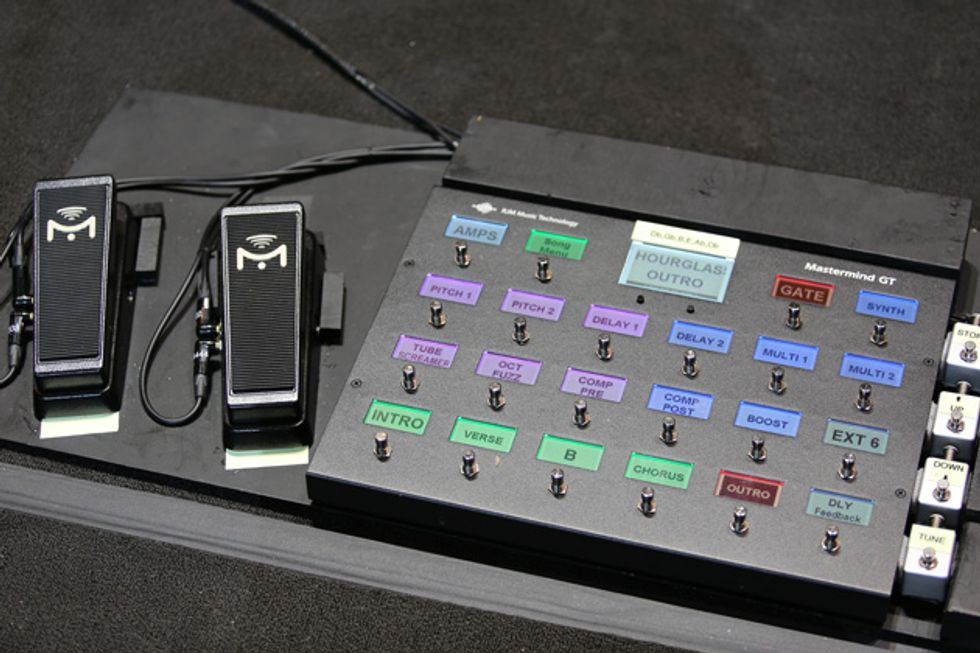
Out front, Howerdel takes the sonic reins thanks to a pair of Mission Engineering SP1-RJM expression pedals and a RJM Music Mastermind GT controller.
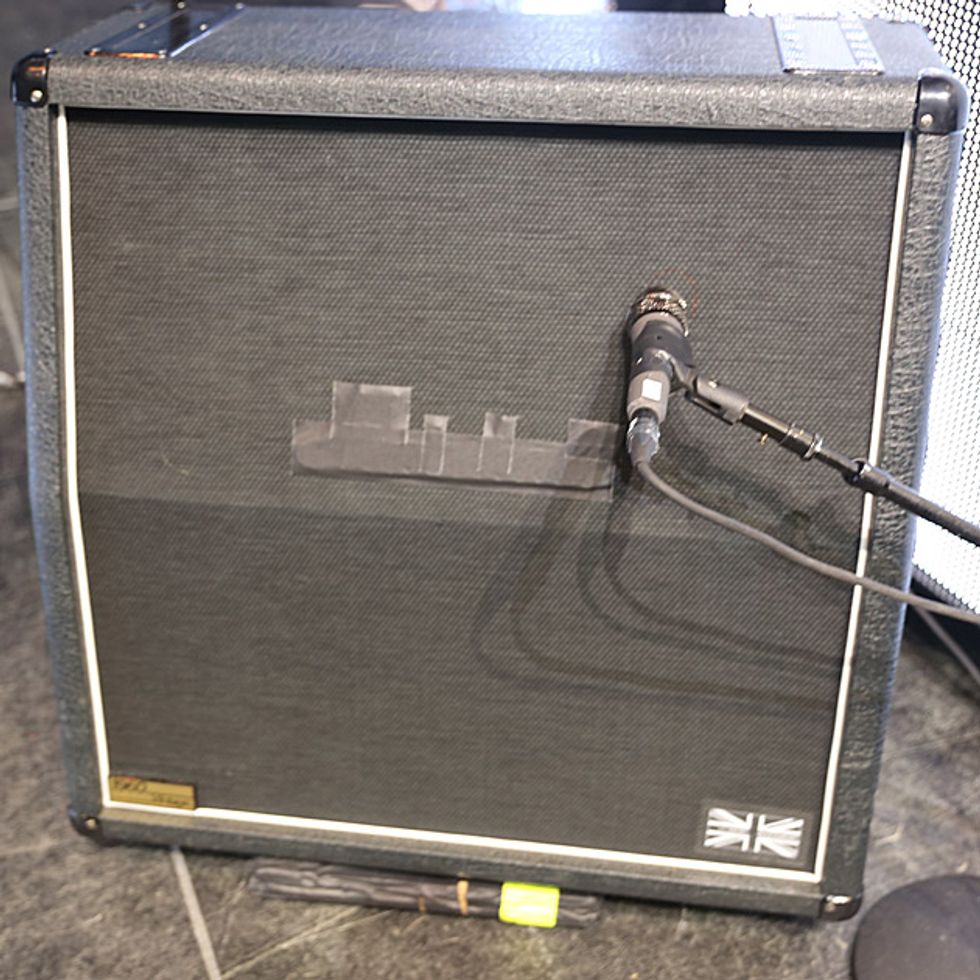
And because he loves to have stage volume and feel the air, everything goes through this Marshall AV 4x12 cabinet loaded with G12 Vintage speakers.






![Rig Rundown: AFI [2025]](https://www.premierguitar.com/media-library/youtube.jpg?id=62064741&width=1245&height=700&quality=70&coordinates=0%2C0%2C0%2C0)












 Shop Scott's Rig
Shop Scott's Rig















![Devon Eisenbarger [Katy Perry] Rig Rundown](https://www.premierguitar.com/media-library/youtube.jpg?id=61774583&width=1245&height=700&quality=70&coordinates=0%2C0%2C0%2C0)













